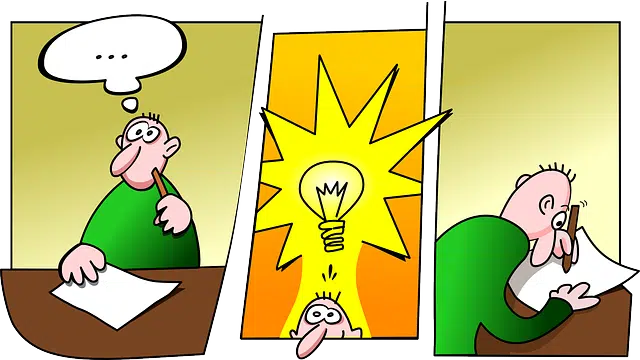
The vignettes are the boxes of a comic strip.
Vignette is a term that comes from the French vignette and is used to name the boxes in a series that, with their drawings and texts, form a comic strip . The concept also refers to the scene printed in a publication that may be accompanied by a comment and that is generally humorous in nature.
The vignette, therefore, is the painting that represents an instant or moment in a comic strip . It is usually considered as the pictographic representation of the minimum significant time or space. Therefore, it is the minimum unit of the comic or comic book montage.
Components of a vignette
The vignettes can present verbal language and iconic language simultaneously, since some display only drawings and others also include text . The reading order corresponds to the writing system: in Western countries, therefore, the vignettes are read from left to right, in the same direction in which the pages are turned. This format changes in those countries that write and read from right to left, such as Japan .
The vignettes are delimited by black lines and separated by a space known as a street or gutter . The reader must interpret the dead times between the different vignettes and give them a meaning.
Currently, digital comics (which can be read over the Internet or on a device such as a computer or tablet PC) bring into play the notion of vignette, since the transfer between scene and scene can be done in different ways: with animations, requiring the reader to click or touch a certain point on the screen, etc.

Sequences of panels can be found in a comic.
Storyboard
Another area in which vignettes are used is cinema, specifically in the making of a storyboard, that is, a series of drawings that are shown in sequence and that serve as a guide to understand a story , to get an idea of how it will turn out. a specific animation of a character or to build the skeleton of a film prior to production.
The origins of storyboarding (the application of which is known as storyboarding ) date back to the 1930s, at the Disney studios. Until then, both the father of cartoons and other studios had used similar processes . The popularity of this technique, as simple in appearance as it was useful for creators of animated content, was considerable during the 1940s.
Thanks to the use of storyboarding, it is possible to visualize the development of the events of a story just as the cameras will see them, simply by investing the time and paper to make the drawings. Needless to say, this process is very economical, it does not entail a significant expense for the makers of a film, so there are not many valid reasons to overlook it.
At the bottom of each frame it is possible to make notes related to technical issues specific to the filming, or to the director 's objectives that are too detailed to be expressed in the vignettes.
Complexity of vignettes in a storyboard
The degree of complexity of a storyboard varies depending on the needs and the area in which it is used. Advertisers usually use this technique to give free rein to their creativity, but they do not require a level of detail as deep as that of filmmakers, given that they generally do not seek to cause such a wide range of emotions and sensations in consumers. In addition, the number of people who will consult it at the time of realization influences.
Finally, it is worth mentioning that the use of color , as well as the finishing of the images, depends on the taste of each person: a black and white storyboard, composed of geometric sketches, is equally valid as a sequence of realistic color paintings.
